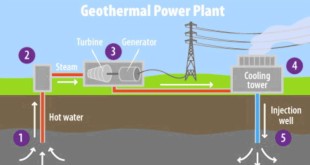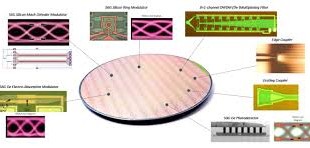Introduction
Particle colliders stand at the forefront of modern physics, enabling us to recreate the extreme conditions of the early Universe and probe the fundamental building blocks of matter. Among the myriad particles revealed by these powerful machines, the Higgs boson—often dubbed the “God particle”—plays a pivotal role by endowing matter with mass. The discovery of the Higgs boson at CERN’s Large Hadron Collider (LHC) marked a monumental breakthrough in our understanding of the Standard Model, yet it also opened up new questions about the nature of the Universe. Today, as scientists worldwide pursue answers to these profound mysteries, next-generation colliders promise to push the boundaries of knowledge even further.
The Higgs Boson: The Particle That Gives Mass
At the heart of the Standard Model lies the Higgs mechanism, a process by which particles acquire mass as they interact with the ubiquitous Higgs field. The Higgs boson is the quantum manifestation of this field, and its discovery has validated decades of theoretical predictions. Without the Higgs boson, particles would remain massless, and the formation of atoms, stars, and galaxies would be impossible. By studying the Higgs boson in exquisite detail, scientists hope to unlock further secrets of the Universe—ranging from the mystery of dark matter to the reasons behind the imbalance of matter and antimatter.
The Role of Particle Colliders in Modern Physics
Particle colliders have revolutionized our approach to understanding the Universe by allowing us to smash subatomic particles together at near-light speeds. These high-energy collisions momentarily recreate the conditions that existed fractions of a second after the Big Bang, providing a unique window into the fundamental forces and particles that govern the cosmos. The LHC, with its 27-kilometre ring, has been instrumental in confirming the existence of the Higgs boson, while also probing deeper into phenomena such as quark-gluon plasma and the limits of the Standard Model.
Next-Generation Colliders: FCC, CEPC, and Beyond
As groundbreaking as the LHC has been, its successors are being designed to probe the Higgs boson and other particles with even greater precision. Europe’s Future Circular Collider (FCC), an ambitious project estimated at US$17 billion, aims to extend the energy frontier with a 100-kilometre ring that could unveil new physics beyond the Standard Model. Meanwhile, China is rapidly advancing its own collider technology with plans for the 100-kilometre Circular Electron Positron Collider (CEPC). Expected to cost around US$5.2 billion, the CEPC is designed to act as a Higgs factory, generating millions of Higgs bosons to allow for unprecedented precision in measuring its properties. Additionally, the near-completion of the High Energy Photon Source in Beijing represents another innovative approach, using high-energy photon beams to explore particle interactions.
China is proposing to build a next-generation particle collider—the 100-kilometre Circular Electron Positron Collider (CEPC)—designed to measure the Higgs boson with unprecedented precision. With an estimated cost of US$5.2 billion (36.4 billion yuan), the CEPC would be significantly cheaper than Europe’s US$17 billion Future Circular Collider, and it aims to generate millions of Higgs bosons by colliding electrons and positrons at extraordinarily high energies. This ambitious project, detailed in a comprehensive technical-design report, is set to be submitted for governmental approval next year and, if backed, could see construction begin as early as 2027, with the facility coming online within a decade.
The CEPC is intended not only to probe the fundamental properties of the Higgs boson but also to address deep questions beyond the Standard Model, such as the nature of dark matter and the imbalance between matter and antimatter in the Universe. Building on China’s existing expertise from facilities like the Beijing Electron Positron Collider and the nearly complete High Energy Photon Source in Beijing, the project is poised to advance the frontiers of particle physics by providing a more cost-effective and powerful tool for exploring the mysteries of the cosmos.
Global Applications and Impact on Science and Technology
The advancements in particle collider technology are not confined to academic research; they have far-reaching implications across multiple fields. By providing insights into the mechanisms that give rise to mass, colliders help us understand the evolution of the Universe—from the immediate aftermath of the Big Bang to the complex structures of galaxies and stars. Moreover, the technological innovations spurred by these mega-projects drive progress in areas such as materials science, data processing, and even medical imaging. As global collaborations continue to fuel these projects, the resulting discoveries will not only redefine our understanding of the cosmos but also catalyze new technologies that can transform everyday life.
The Broader Impact: Unraveling the Evolution of the Universe
The detailed study of the Higgs boson through these advanced colliders has the potential to answer some of the most profound questions in physics. By investigating how particles acquire mass, scientists can better understand the evolution of the Universe—from the explosive aftermath of the Big Bang to the formation of complex structures like galaxies and solar systems. Moreover, the precise measurements enabled by these colliders could reveal why particles interact in specific ways, shedding light on potential new physics phenomena that could extend or even challenge the current Standard Model.
The technological innovations and international collaborations driving these projects not only push the frontiers of science but also inspire new generations of researchers and engineers. The insights gained from studying the Higgs boson could lead to unforeseen applications in other fields, ranging from materials science to quantum computing, and beyond
Conclusion
The quest to understand the Higgs boson and its role in shaping the Universe is a journey that has captivated scientists for decades. With current and next-generation colliders like the LHC, FCC, and CEPC, we are on the cusp of unlocking deeper mysteries that could redefine the very foundations of physics. As these colossal machines begin to probe the subatomic world with unprecedented precision, they pave the way for discoveries that extend beyond the Standard Model—offering answers to some of the most fundamental questions about our existence. The next chapter in particle physics promises not only to illuminate the origins of mass but also to transform our technological landscape and expand the horizons of human knowledge.
References and Resources also include:
https://www.scientificamerican.com/article/china-has-plans-for-the-worlds-largest-particle-collider/
 International Defense Security & Technology Your trusted Source for News, Research and Analysis
International Defense Security & Technology Your trusted Source for News, Research and Analysis


